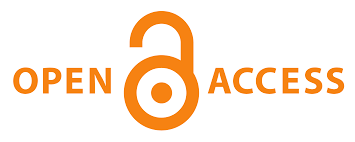The Students’ Learning Strategies in Listening Section of Paper-Based TOEFL Tests
Main Article Content
Nur Akmaliyah
Uswatun Hasanah
This study aimed to identify the learning strategies utilized by students in the English Department of UIN Ar-Raniry during the listening section of paper-based TOEFL tests, determine the predominant learning strategy among these students, and explore the differences in the strategies employed by those who achieved the highest and lowest scores in the listening section of the tests. The study's population comprised 224 students from the English Department of the Faculty of Education and Teacher Training of UIN Ar-Raniry who had completed paper-based TOEFL tests. The purposive sampling technique was employed to select the sample of forty students with the highest and lowest scores in the listening section of paper-based TOEFL tests for this study. The research methods employed included document analysis, questionnaires, and interviews. The questionnaire items in this study were adapted from SILL (The Strategy Inventory for Language Learning) developed by Oxford. The study's findings indicate that students utilize diverse learning strategies throughout the listening section of the TOEFL test. The strategies encompass memory-based direct strategies, cognitive direct strategies, compensation-based direct strategies, metacognitive indirect strategies, affective indirect strategies, and social indirect strategies. They implement these strategies proficiently. The predominant learning strategies employed by the majority are "organizing and evaluating your learning," categorized under metacognitive indirect strategies. They utilize these strategies to a moderate extent. Simultaneously, the majority of students with the lowest scores employed a variety of learning strategies, particularly social strategies, and demonstrated high levels of proficiency in these strategies.
Alfiami, M. (2020). Students’ Listening Strategies in Improving Listening Toefl Score (Doctoral dissertation, UIN Ar-Raniry).
Bahri, S., Nadhira, C., & Silviyanti, T. M. (2016). The effect of captioned video on students’ listening comprehension [Paper presentation]. Proceedings of the 1st English Education International Conference in conjunction with the 2nd Reciprocal Graduate Research Symposium of the Consortium of Asia Pacific Education Universities (RGRS-CAPEU), Banda Aceh.
Fitria, T. N. (2021). An analysis of the students’ difficulties in TOEFL prediction test of listening section. ENGLISHFRANCA: Academic Journal of English Language and Education, 5(1). https://doi.org/10.29240/ef.v5i1.2212
Hanim, I. (2023). The TOEFL Listening Strategies Experienced by Nursing Students of POLTEKES-Banten. Globish (An English-Indonesian journal for English, Education and Culture), 12(1). http://dx.doi.org/10.31000/globish.v12i1.7283
Heffernan, N. (2006). Successful strategies: Test-taking strategies for the TOEFL. The Journal of ASIA TEFL, 3(1), 151-170.
Higby, E., & Hudon, E. (2014). TOEFL IBT premier (Fifth Edition). New York: Kaplan Publishing
Huy, L, H, T. (2015). An Investigation into Listening Strategies of EFL Students within the High School Setting. Asian Journal of Educational Research, 21-34.
Iqbal, M. (2020). An Analysis of Students' Strategies in Answering The Listening Section of TOEFL Test (A Study at English Language Education Department of UIN Ar-Raniry) (Doctoral dissertation, UIN Ar-Raniry Banda Aceh).
Iqbal, M., & Zurriyati, Z. (2020). Students’ perception of the TOEFL test as thesis examination requirement. Journal of English Teaching, Linguistics, and Literature, 1(1), 90–99. https://ejurnal.iainlhokseumawe.ac.id/index.php/jetlee/article/view/980
Kharizmi, M. (2022). students’strategies in understanding listening section of paper-based toefl tests (A Study at the Fourth Semester of English Department Students of Tarbiyah Faculty of UIN Ar-Raniry). Pedagogik: Jurnal Ilmiah Pendidikan dan Pembelajaran Fakultas Tarbiyah Universitas Muhammadiyah Aceh, 9(1), 57-67.
Lasi, F., & Bouk, E. (2022). A Study on the EFL Learners’ Ability in Taking TOEFL Listening Test. Ethical Lingua: Journal of Language Teaching and Literature, 9(2), 802-809. https://doi.org/10.30605/25409190.436
Mahlil. (2010). The students’ difficulties in listening section of the TOEFL test at English Education Department of Syiah Kuala University. Syiah Kuala University.
Matsuoka, Y. (2009). Possible strategies for listening comprehension: Applying the concept of conversational implicature and adjacency pairs to understand speaker intention in the TOEFL listening section. Accent Asia, 3(2), 27-56.
Oxford, R. L. (1990). Language Learning Strategies. What Every Teacher should know, Boston, USA: Heinle and Heinle.
Rahman, F. (2020). Undergraduate Students’perception Towards Grammar Assessment In The Efl Classroom. SAGA: Journal of English Language Teaching and Applied Linguistics, 1(2), 127-136. https://doi.org/10.21460/saga.2020.12.26
Razmalia, A., & Gani, S. A. (2017). Students’ strategies in taking TOEFL listening test. Research in English and Education Journal, 2(4), 1-9.
Rahman, F., & Saputra, N. (2021). English as International Language Revisited: Implications on South Korea’s ELT Context. Scope: Journal of English Language Teaching, 6(1), 08-15. http://dx.doi.org/10.30998/scope.v6i1.9383
Rina, P., & Tiarina, Y. (2021). An analysis of English department students' difficulties in answering TOEFL test of listening comprehension. Journal of English Language Teaching, 10(1), 28-35.
Sharpe, P. J, (2005). How to Prepare for the TOEFL (Test of English as a Foreign Language), 11th edition, The Ohio State University.
Silviyanti, T. M. (2014). Looking into EFL students’ perception in listening by using English movie videos on YouTube. Studies in English Language and Education, 1(1), 42-58. https://doi.org/10.24815/siele.v1i1.1119
Silviyanti, T. M., Ramadhani, R., & Samad, I. A. (2020). EFL students’ strategies in answering the listening section of the Longman TOEFL. Studies in English Language and Education, 7(1), 237-246. https://doi.org/10.24815/siele.v7i1.13007
Widodo, A., Russilawatie, N., & Dewi, S. R. (2021). Test-repeaters' perceptions of difficulty on the TOEFL listening test. In Post Pandemic L2 Pedagogy (pp. 159-164). Routledge.
Yosintha, R., Yunianti, S. S., & Ramadhika, B. (2021). Structure and written expressions of the TOEFL: Linguistic and non-linguistic constraints. NOBEL: Journal of Literature and Language Teaching, 12(1), 70-90. https://doi.org/10.15642/NOBEL.2021.12.1.70-90
Yuliandani, R., Ikhsanuddin, & Sumarni. (2014). Analyzing Students TOEFL Listening Comprehension Test Performance. Jurnal Pendidikan Dan Pembelajaran, 3(10), 1–11. https://doi.org/10.26418/jppk.v3i10.7275
Yulisa, D. (2018). Learning to Listen: Listening Strategies and Listening Comprehension of Islamic Senior High School Students. Jurnal Pendidikan dan Pengajaran, 22-30. https://doi.org/10.19109/ejpp.v5i1.2046
Yuzar, E., & Rahman, F. (2024). Unlocking Global Opportunities with “TOEFL Training Program” for Islamic Boarding School Students. Journal of Community Service and Society Empowerment, 2(02).
Zimmermann, J., von Davier, A. A., Buhmann, J. M., & Heinimann, H. R. (2018). Validity of GRE general test scores and TOEFL scores for graduate admission to a technical university in Western Europe. European Journal of Engineering Education, 43(1), 144-165.




